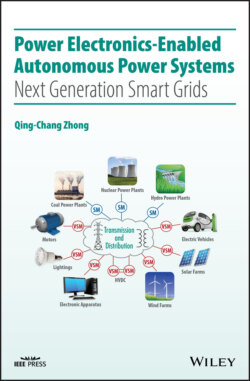Читать книгу Power Electronics-Enabled Autonomous Power Systems - Qing-Chang Zhong - Страница 19
1.3.1 Today's Grids
ОглавлениеA power system today typically consists of facilities to generate, transmit, distribute, and utilize electrical power (Karady and Holbert 2004). Power plants generate electricity from energy sources, such as fossil fuels, hydro, nuclear, etc., and are often far from load centers because of associated pollution and risks or geographical limitations. In order to reduce losses and investment costs, the generation of electricity is currently dominated by centralized large power plants and the electricity generated is transformed into high or ultra‐high voltage for transmission and then transformed to low voltage for utilization at load centers. At the transmission level, there are often interconnections in order to form a strong grid, to which massive power plants are connected. Distribution networks are often radial. Generation facilities and loads are generally separated by transmission and distribution networks and electricity normally flows unidirectionally from generation to loads. In particular, the electricity flow in distribution networks is unidirectional.
There is a need to maintain balance between generation and load demand in power systems. Otherwise, the frequency and/or voltage may vary in a wide range, which may cause damage. In current power systems, the system stability is maintained by regulating a small number of large generators to meet the balance between generation and demand. Most loads in the system do not actively take part in system regulation.
